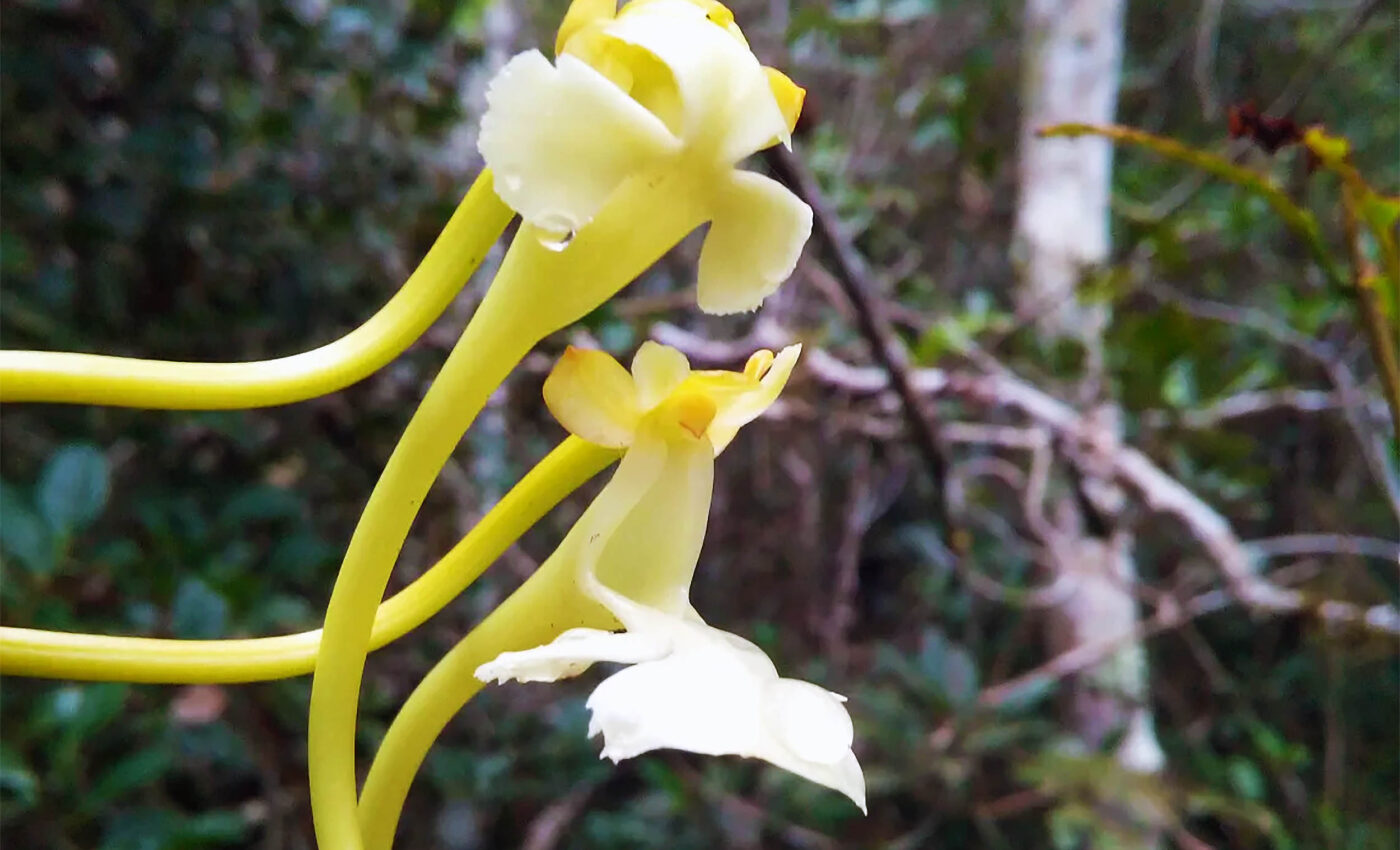
New orchid species, Solenangis impraedicta, sets a world record
Discovering a new orchid species with the longest nectar spur on record, scientists from the Missouri Botanical Garden and international collaborators have linked their find directly to Darwin’s orchid in the heart of Central Madagascar.
This significant discovery represents a milestone in botanical research. It also highlights the critical need for urgent conservation efforts to protect the rapidly diminishing biodiversity of Madagascar.
Floral wonders of Madagascar
Tariq Stévart, the Director of the Garden’s Africa and Madagascar program, expressed excitement about the rarity of this discovery. He emphasized the critical conservation needs underscored by this species.
“Discovering a new orchid species is always an exciting event, but finding such amazing and charismatic species happens only once in a scientist’s career. I really hope that this highly threatened species draws attention to the urgent crisis that is affecting Madagascar’s biodiversity and helps support Garden’s program there,” said Stévart.
Madagascar is renowned for its unique flora, particularly flowers with elongated floral tubes tailored for pollination by long-tongued hawkmoths.
The most celebrated of these, Darwin’s orchid (Angraecum sesquipedale), stands as a symbol of Charles Darwin’s forward-thinking theory. He predicted the existence of a then-undiscovered moth with a long proboscis specifically adapted for its pollination. This prediction was confirmed 41 years later.
Solenangis impraedicta — new orchid species linked to Darwin
Building on this legacy, the newly identified orchid species, Solenangis impraedicta, showcases a remarkable example of parallel evolution. Its nectar spur stretches an astonishing 33 cm, setting a new record for the orchid family.
João Farminhão, a coauthor and researcher at the Coimbra University Botanic Garden, highlighted the extraordinary contrast between the modest 2-cm flowers and their extensive nectar tube, describing it as “mind-blowing.”
Solenangis impraedicta is not only notable for having the third longest spur among flowering plants. It also represents the most extreme adaptation to hawkmoth pollination that has been discovered since 1965.
The discovery journey began with Patrice Antilahimena, a field botanist, during an environmental study. Later, Garden Botanist Brigitte Ramandimbisoa and Simon Verlynde, a Ph.D. student, expanded upon his work and unearthed a new habitat for this species.
This discovery adds a significant chapter to the angraecoid orchids’ narrative, a group extensively studied by Stévart and his team.
Conservation in the shadows
However, this new member of “Darwin’s pollination guild” faces threats from mining operations and the potential risk of poaching for the orchid trade.
Stévart emphasized the need for caution in disclosing such a discovery. He highlighted the importance of protecting wild populations and keeping their exact locations secret to prevent exploitation.
Legacy of protection and mystery
The formal description of Solenangis impraedicta, coming 15 years after its initial discovery, allowed time for the implementation of crucial conservation strategies, including ex situ cultivation and seed banking, in collaboration with the Ambatovy Conservation Department.
Despite these efforts, the precise pollinators of this orchid remain a mystery. Preliminary studies by Marie Savignac using camera traps in 2019 suggested large hawkmoths as likely candidates, echoing the poetic symmetry with Darwin’s own predictions.
This discovery not only enriches our understanding of the intricate web of life in Madagascar but also serves as a reminder of the ongoing challenges in conserving these precious ecosystems. As we marvel at the wonders of nature, let us also commit to protecting the fragile beauty that remains.
The full study was published in the journal Current Biology.
—–
Like what you read? Subscribe to our newsletter for engaging articles, exclusive content, and the latest updates.
Check us out on EarthSnap, a free app brought to you by Eric Ralls and Earth.com.
—–













